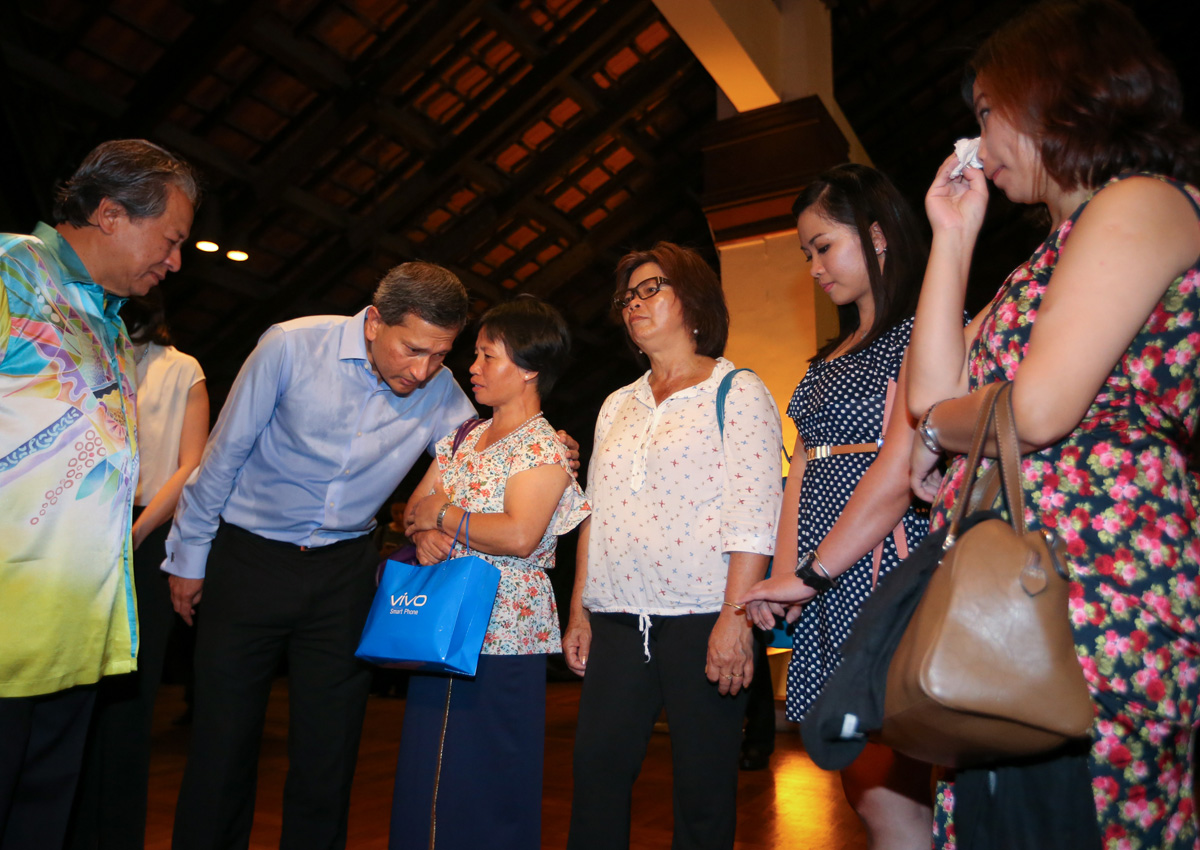Just 30 days after Gleneagles Hospital in Kota Kinabalu opened its doors for the first time, staff there got word of a terrible accident.
An earthquake had just struck Mount Kinabalu and several people were badly injured.
“We had actually opened ahead of schedule and because of that, we were able to help,” said Mr Jean-Francois Naa, the hospital’s chief executive.
“Things never happen by chance.”
Yesterday, Foreign Minister Vivian Balakrishnan expressed his gratitude to all those who had helped Singapore in the aftermath of last June’s earthquake, which killed 18 people.
Ten of them were Singaporeans.
“In this time of great tragedy, Singapore… appreciated that we had a true friend in Malaysia, especially the people of Sabah,” he said at a special reception in Kota Kinabalu.
“The support and assistance rendered to us by all of you here brought immeasurable relief and consolation.”
Dr Balakrishnan’s guests included relatives of the guides who had died protecting Singaporean pupils, as well as representatives from various Malaysian government agencies and other organisations that had pitched in to help in the immediate aftermath.
The 6.0-magnitude earthquake claimed the lives of seven Primary 6 pupils from Tanjong Katong Primary School.
Two teachers and a Singaporean adventure guide also died.
Many of those at yesterday’s reception spoke of how things are slowly returning to normal on the mountain, although measures have been taken to minimise casualties in the event of another quake.
Mr Richard Soibi, who is chairman of the Mount Kinabalu Guides Association, said that previously, there would be one guide for every six climbers.
Now, the ratio is one guide to five climbers.
Every two climbers under 16 years old will be accompanied by one guide.
“The Sabah park management is still worried about the risk,” said Mr Soibi, who was at the reception with seven mountain guides.
“This way, it’s easier for us to take care of people if anything happens.”
Ms Quek I-Gek, who is marketing director of Mountain Torq – the company that manages the Via Ferrata trail on the mountain – said that a new clip system on a single continuous line has also been installed along the longer circuit.
Typically, climbers on the Via Ferrata trail have to clip and unclip their harnesses every few metres as they progress along the rock.
The new system means people can move along the rock face more quickly in an emergency.
Mr Yassin Miki, who manages Kinabalu Park, said that climbers have been trickling back to the mountain since it was fully reopened in December.
There were more than 3,000 climbers last month, up from around 2,000 a month between December and February.
Now, the number of climbers allowed on the mountain at any one time is limited to around 120, down from the previous 220.
This is partly because some of the lodgings along the way up have been badly damaged and can no longer be used.
“We will keep some of them the way they are, so we can show visitors what happened during that time,” Mr Yassin said.
Dr Balakrishnan is on a three-day working visit to Sabah and will fly back today.
During the trip, he met his Malaysian counterpart, Datuk Seri Anifah Aman, to reaffirm the close ties between both countries.
Dr Balakrishnan also met Sabah Chief Minister Musa Aman and other Sabah ministers.
linettel@sph.com.sg

This article was first published on April 3, 2016.
Get a copy of The Straits Times or go to straitstimes.com for more stories.




































































